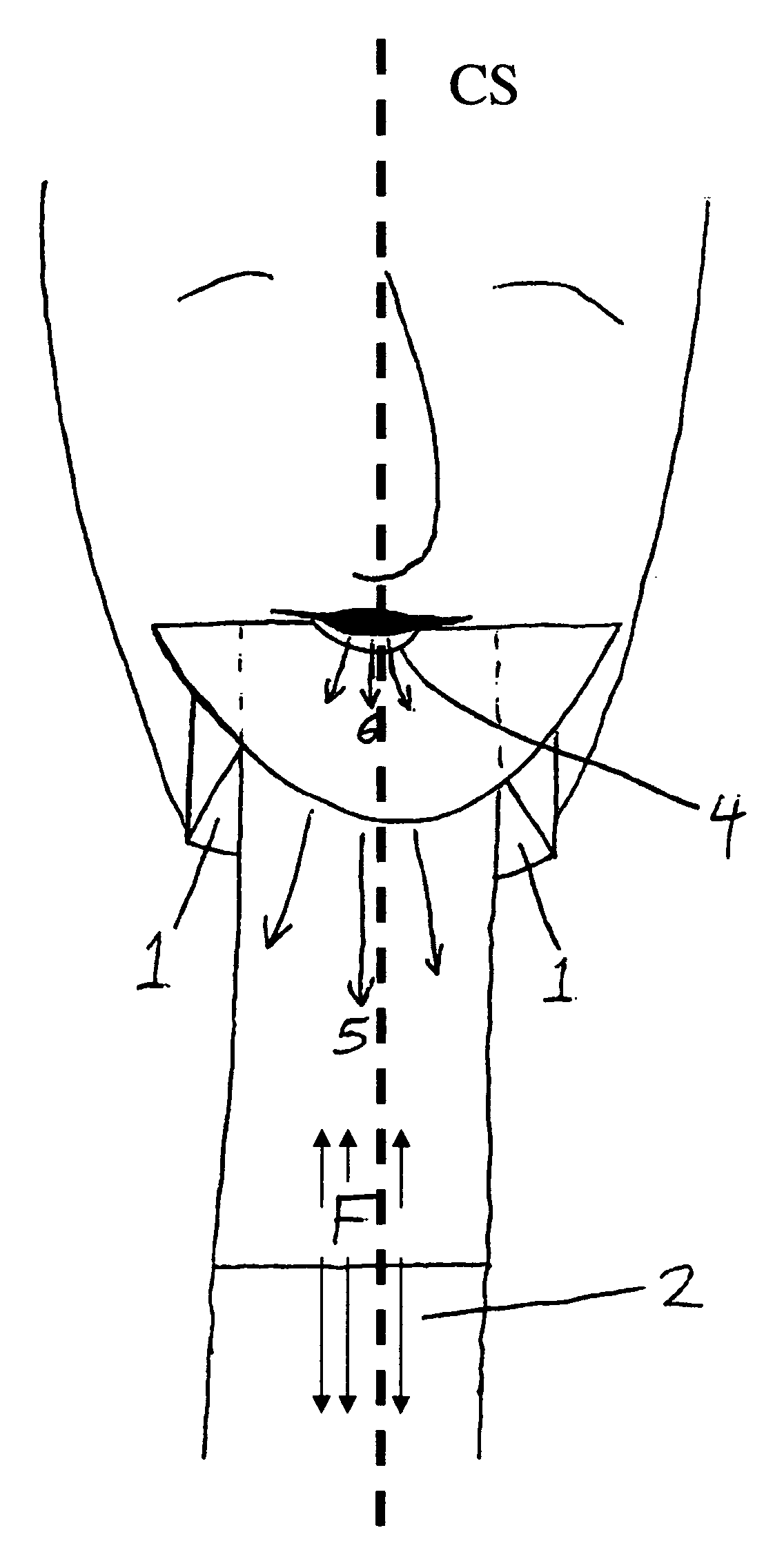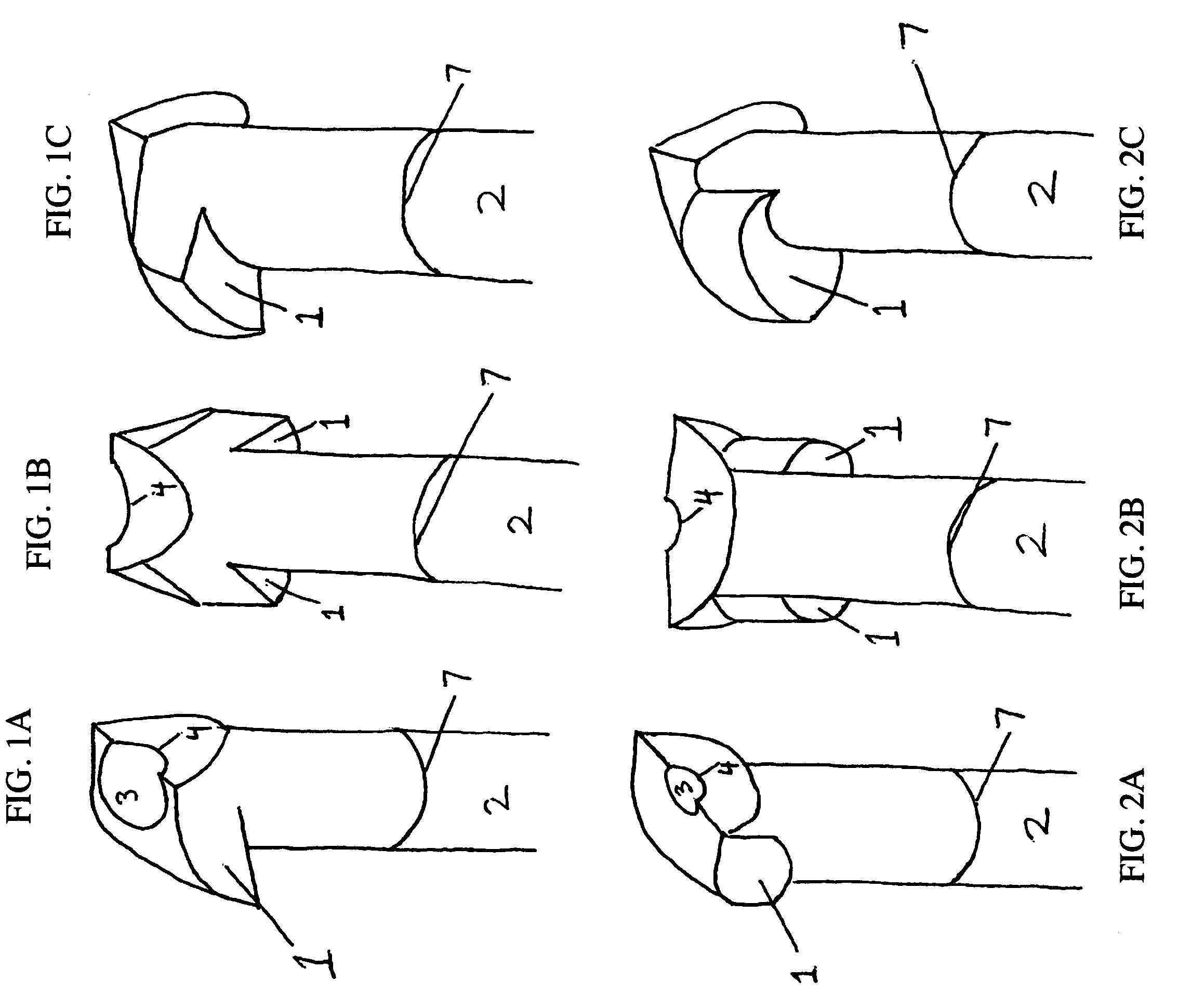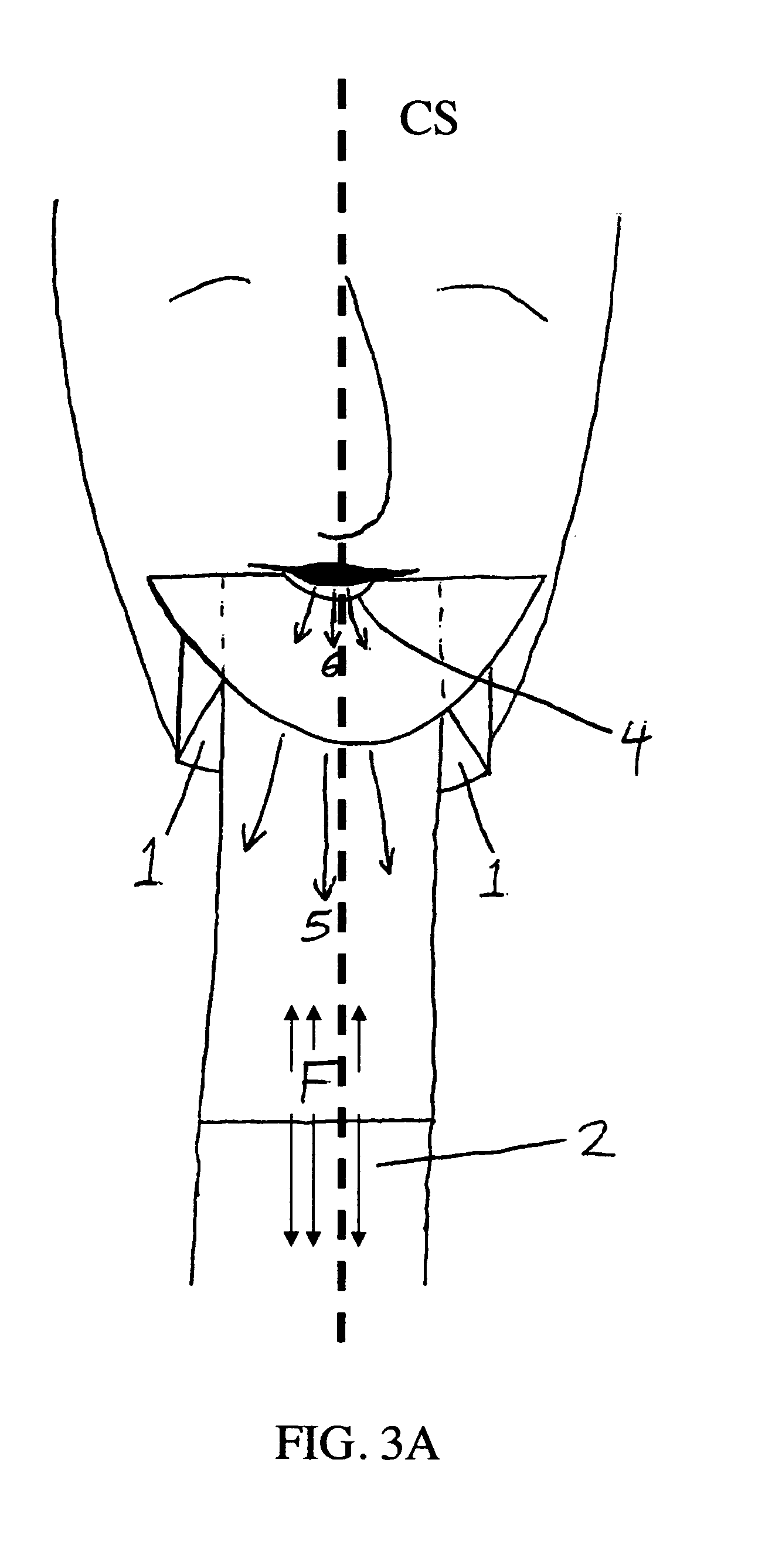End blown flute having an acoustic air space
a technology of acoustic air space and a flute, which is applied in the field of endblown flutes, can solve the problems of difficult to precisely control the finger holes and keys, the tonality of the transverse flute is known to be adversely affected, and the difficulty in maintaining the constrained horizontal position is especially tiresome on the hands, arms and neck. achieve excellent tone equality or equalization
- Summary
- Abstract
- Description
- Claims
- Application Information
AI Technical Summary
Benefits of technology
Problems solved by technology
Method used
Image
Examples
Embodiment Construction
[0023]Embodiments of the present invention are described below with reference to FIG. 1A to FIG. 4B.
[0024]In the drawings, reference numeral 1 denotes the tuning chamber that is formed at the proximal end of a musical instrument, e.g., a flute. The tuning chamber may be a component of the head-joint of the instrument, or may be a component of the instrument itself where the instrument does not comprise a separable head-joint as described herein. Reference numeral 2 denotes the body of the instrument comprising a fluid air space (F), i.e., that air space generally defined by the sound chamber and central bore of the instrument. Reference numeral 3 denotes the embouchure hole, which hole is located, at least in part, through the proximal surface of the tuning chamber, and reference numeral 4 denotes the air reed on the anterior surface of the head-joint and / or instrument, which, in some embodiments, is formed from a portion of the embouchure hole. Reference numeral 7 denotes the point...
PUM
 Login to View More
Login to View More Abstract
Description
Claims
Application Information
 Login to View More
Login to View More - R&D
- Intellectual Property
- Life Sciences
- Materials
- Tech Scout
- Unparalleled Data Quality
- Higher Quality Content
- 60% Fewer Hallucinations
Browse by: Latest US Patents, China's latest patents, Technical Efficacy Thesaurus, Application Domain, Technology Topic, Popular Technical Reports.
© 2025 PatSnap. All rights reserved.Legal|Privacy policy|Modern Slavery Act Transparency Statement|Sitemap|About US| Contact US: help@patsnap.com



